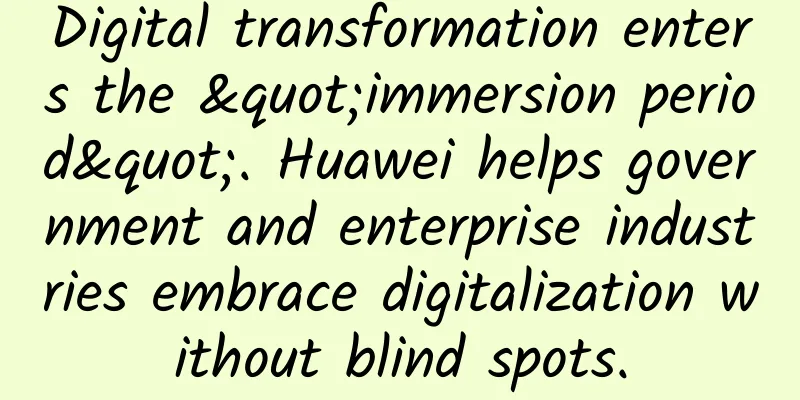Co-construction and sharing to protect and release the dividends of 5G

|
There has always been controversy in the field of economics about what kind of construction and operation model public infrastructure should adopt. Adopting a regional authorized monopoly operation model can certainly reduce costs, but it brings two problems: first, the issue of fees. If the government does not strictly control it, absolute monopoly will inevitably lead to absolutely high fees, thus harming people's livelihood; second, the issue of technological progress. Monopoly operators have no interest in the renewal of infrastructure and will continue to use it as long as it can be used. In my country, among the public infrastructure related to people's livelihood, water, electricity, coal, heat and other services provided to end users are operated by authorized monopoly and adopt the government pricing principle. After all, they do not need to achieve a technological revolution; while the communication network adopts a model of monopoly competition among multiple operators. It is undeniable that users have benefited from the competition and their enthusiasm for building new networks is also high. In 2015, the "Internet +" strategy was launched, and the "speed up and fee reduction" work began to advance in the same year, pushing operators to release dividends to the industry. How to release them? After squeezing out almost all the water in the profit space, the only way is to increase the cost space, and "co-construction and sharing" has become an important means. Past events: the layout of co-construction and sharing of mobile communications in the 4G era my country's large-scale co-construction and sharing of mobile communications began in the 4G era. I believe there are two major landmark events. The first is the birth of China Tower in 2014, which concentrates the site resources of various operators and is responsible for providing basic physical facilities for the construction of operators' base stations. In layman's terms, the three major operators may have to erect three towers and build three computer rooms to build a base station in one place, but after the establishment of the tower company, they share the same tower and the same computer room. Therefore, a common scene outdoors is that multiple base station equipment of the three major operators is hung on a tower. Second, from the end of 2013 to 2014, the Ministry of Industry and Information Technology issued virtual operator licenses to more than 40 companies. They share network resources at all levels with basic operators and achieve relatively independent operations at the level of number cards and other services. The author believes that the co-construction and sharing of mobile communications in the 4G era is still in a relatively superficial pilot stage. The tower model has only achieved the co-construction and sharing of physical buildings, and has not yet gone deep into the co-construction and interconnection of the network itself; the virtual operator model is essentially the resale of network resources, which is at best sharing, and has not yet achieved co-construction. Despite this, they still bring significant value. First, the cost of base station construction and operation has dropped. The construction and operation of physical facilities, which were originally undertaken by one operator, are now shared by three companies. Second, the speed of base station construction has accelerated. Finding sites used to be the most troublesome thing, but now it is undertaken by professional tower companies. Third, the environmental protection effect is remarkable, mainly reflected in the saving of land costs and the reduction of total energy consumption costs. Fourth, advanced technologies are adopted in a centralized manner. For example, tower companies use IoT devices to uniformly supervise various sites and realize visual management. Fifth, customer touchpoints are more extensive and business innovation is more in place. For example, Lenovo Dongde (virtual operator) embeds data network services in various Lenovo laptops to achieve user scale improvement. Current situation: In the 5G era, mobile communications co-construction and sharing extend to the network layer The tower and virtual operator models of the 4G era will continue to be used in the 5G era. For example, most of the newly added macro base stations of 5G are built by tower companies, and virtual operators have gradually begun to resell 5G networks. The most significant measure in my country's 5G network co-construction and sharing is to promote the co-construction and sharing of China Telecom and China Unicom, China Mobile and China Broadcasting Corporation. Specifically, for China Telecom and China Unicom, the two parties will demarcate areas, and undertake the construction, subsequent maintenance and operation of 5G base stations in their respective areas. The relevant base stations will be shared (access network), the core network will be built separately, and 5G frequency resources will be shared. For China Mobile and China Broadcasting Corporation, the two parties will jointly invest in the construction of 700MHz 5G network (shared ownership and joint use) in a 1:1 ratio, China Mobile will undertake operation and maintenance, and China Broadcasting Corporation will pay it; China Mobile will provide China Broadcasting Corporation with a paid transmission bearer network from 700MHz base stations to provincial and municipal nodes, and a paid open sharing of 2.6GHz frequency band 5G network; before the 700MHz 5G network is commercially available, China Broadcasting Corporation will share China Mobile's 2G/4G/5G network for a fee; China Mobile will provide China Broadcasting Corporation with a paid international transit service. It can be seen from this that the co-construction and sharing of mobile communications has developed from the physical facility sharing model of towers and the network resale model of virtual operators to equal cooperation between two large-scale peer entities, and the co-construction and sharing has also reached the level of access networks. The reason is that, first of all, for the mobile communications market, my country plans to create a balanced monopoly competition pattern, thereby releasing infrastructure dividends, but the situation of China Mobile's dominance is difficult to reverse. In 2019, China Telecom and China Unicom plan to invest a total of 17 billion yuan in 5G networks, lagging behind China Mobile's 24 billion yuan. Without joint construction and sharing, the gap in infrastructure scale will widen and the business operation gap will be irreparable. Secondly, in the 5G era, China Radio and Television has joined the 5G camp. As a new operator that only has high-quality frequency resources, if it does not cooperate with other operators, it will be difficult to provide effective services to users before completing network coverage. Finally, under the background of "new infrastructure", the construction of 5G networks needs to be accelerated, and the work of "speeding up and reducing fees" also needs to be further promoted to release more industrial dividends to the social economy. To this end, it is necessary to promote it through the "co-construction and sharing" approach. Taking the cooperation between China Telecom and China Unicom as an example, after one year of cooperation, the number of 5G base stations built by both parties is basically the same as that of China Mobile, and the investment savings have reached 60 billion yuan, which can be used as dividends released to the industry. Prediction: Global co-construction and sharing to further release industry dividends At the end of October 2020, the Fifth Plenary Session of the 19th Central Committee of the Communist Party of China was held, which pointed out the development direction for the next five to 15 years and made it clear that "we will unswervingly build a strong manufacturing country, a strong quality country, a strong network country, and a digital China, promote the upgrading of industrial foundations and the modernization of industrial chains, and improve economic quality, efficiency and core competitiveness. We must improve the modernization level of industrial chains and supply chains, develop strategic emerging industries, accelerate the development of modern service industries, coordinate the promotion of infrastructure construction, accelerate the construction of a strong transportation country, promote energy revolution, and accelerate digital development." Specifically, in terms of the construction and development of 5G networks, first of all, the construction of 5G networks needs to be further strengthened and accelerated as an important part of the construction of a network power and digital China. Secondly, in the future, high-quality development will replace the simple requirement for economic growth and become the core of social and economic development. To this end, on the one hand, the 5G network must achieve "industrial chain modernization", and on the other hand, the construction results must achieve "industrial base advancement" so as to more effectively release dividends to the industry. Finally, in terms of the construction model of 5G networks, the model of "coordinating and promoting infrastructure construction" is emphasized, that is, through the tower model, the unified scale and joint construction of physical sites are achieved; through the cooperation model of China Telecom and China Unicom, the cooperative construction of network equipment is achieved. In addition to the macro development direction determined by policies, technological progress will also deepen the co-construction and sharing of 5G networks. First, the deepening of the network level. At present, China Telecom and China Unicom are co-constructing and sharing access networks, interconnecting bearer networks, and independent core networks. China Mobile and China Broadcasting Corporation are more reflected in the former providing resource leasing to the latter. In the future, with the iteration and update of the network, perhaps co-construction and sharing can be achieved in the bearer network and even the core network. Second, the expansion of resource elements. For example, all operators are currently promoting the construction of cloud-network integration. The co-construction and sharing of networks will bring about the co-construction and sharing of cloud resources, and end users will have more massive and efficient cloud resource use. |
>>: It shouldn’t just be the packages that are being pushed up for 5G
Recommend
ChangeIP: Los Angeles high-defense KVM annual payment starts at $19.2, monthly payment is available, and unlimited traffic is optional
ChangeIP is a foreign VPS hosting company registe...
5G messages are not safe either? Will the SMS business die out if it is hit hard again?
[[348875]] This is not the first time that 5G has...
RAKsmart New Year's Big Offer: E3 servers starting at $30/month, new Korean servers, Hong Kong/Japan/US cluster servers, VPS monthly payment starting at $1.99, GPU servers, high-defense servers
RAKsmart has launched a New Year's Big Sale. ...
V5.NET: Hong Kong CN2 server 625 yuan/month, 2*E5-2630L/32GB/1TB SSD/10M CN2 line
V5.NET has released a special promotional model, ...
Discussing the five key technologies for building 5G
It is widely believed that 5G mobile networks wil...
HostYun: Russia's two-way CN2 line with large bandwidth KVM, monthly payment starts from 22 yuan
HostYun has been providing Russian CN2 line VPS f...
IT technology companies should not be "outsiders" in the fight against the epidemic! Details revealed
At the beginning of the 2020 New Year, a sudden C...
Software defines everything! What you must know about enterprise network modernization
[[427967]] This article is reprinted from the WeC...
[Christmas] DMIT: $100/year-2GB/40G SSD/2TB@2Gbps/Los Angeles CN2 GIA
DMIT has released two special Christmas packages,...
What exactly is a socket? Do you want to know?
I believe that everyone was like me when they fir...
edgeNAT VPS 30% off monthly payment, 40% off annual payment, deposit 500 and get 100 yuan, US/Hong Kong/Korea data center
edgeNAT has launched a promotion in February to w...
Understanding Ethernet Switching Technology in One Article
Labs Guide Currently, most campus networks are ne...
As of December 2020, there are 229 million 5G users worldwide
On December 22, according to foreign media report...
4G network speed slows down? Ministry of Industry and Information Technology talks with three operators on this issue
On the 22nd, the Ministry of Industry and Informa...
Wu Hequan, Academician of the Chinese Academy of Engineering: 5G+ education faces seven challenges
Education is a major national and party priority....









